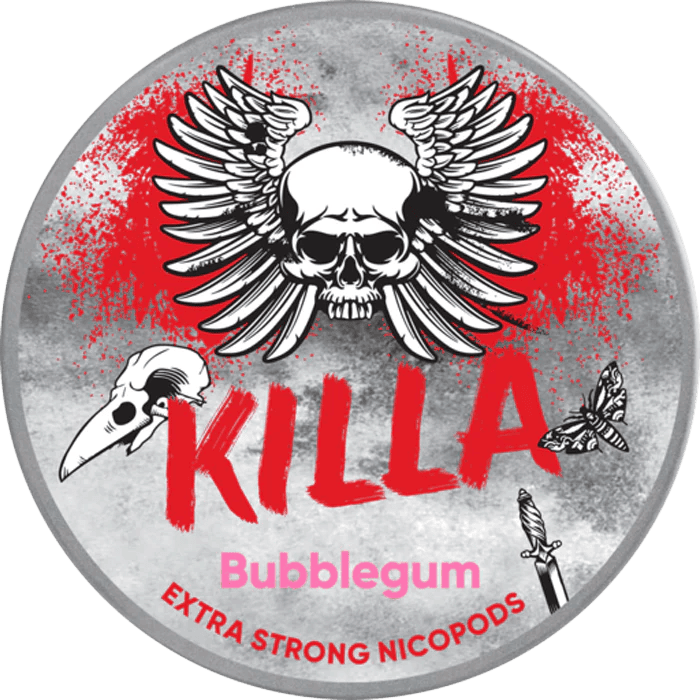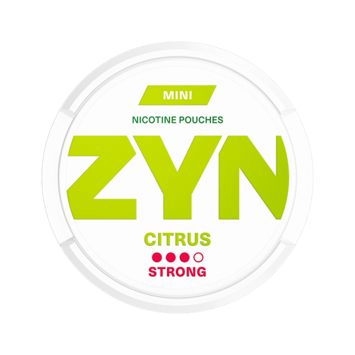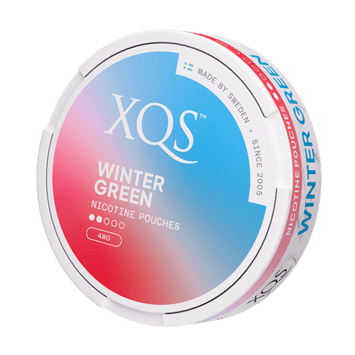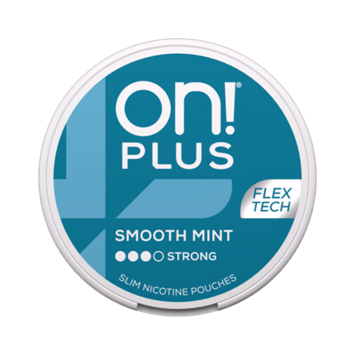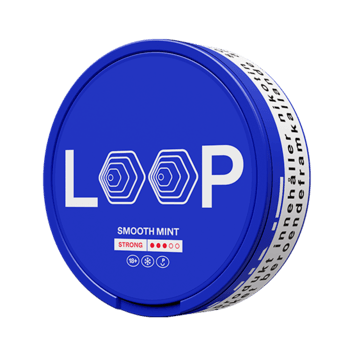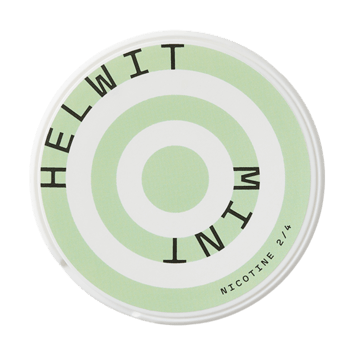Are nicotine pouches safer than vaping?
Philip Plainstein

When considering alternatives to smoking, many individuals are drawn to nicotine pouches and vaping. These products offer distinct ways to consume nicotine, but their safety profiles differ. This article delves into a comparison of these two methods, providing insights to help you make an informed decision.
Nicotine pouches are discreet, tobacco-free products placed under the lip. They deliver a controlled amount of nicotine without smoke or vapour, making them an appealing option for those seeking a smoke-free alternative. On the other hand, vaping involves inhaling vapour produced by heating e-liquid, a method that has gained popularity but raises its own set of health concerns.
This discussion is supported by detailed research from Haypp UK and additional studies. We will explore key features such as flavour variety, strength, and usability, while also examining the ongoing research into their long-term effects. Both products have their advantages and drawbacks, which we will compare to provide a comprehensive analysis.
For more information on how nicotine pouches function, visit our guide: What Do Nicotine Pouches Do?.
Understanding Nicotine Pouches
Nicotine pouches are a modern, tobacco-free alternative designed for those seeking to manage their nicotine intake without smoking or vaping. These small, discreet pouches are placed under the lip, where they slowly release controlled amounts of nicotine. Unlike traditional tobacco products, nicotine pouches do not require spitting or produce any smoke or vapour, making them a convenient option for many users.
Product Composition and Usage
Each nicotine pouch typically contains water, microcrystalline cellulose, nicotine, and food-grade flavourings. These ingredients ensure a smooth and consistent release of nicotine. The pouches are placed between the upper lip and gum, where they dissolve over time, providing a steady nicotine supply without the need for inhalation.
One of the key advantages of nicotine pouches is their ease of use. They are odourless and do not require any special handling, making them ideal for use in various settings. This convenience has contributed to their growing popularity among those looking for a discreet nicotine solution.
Variety of Flavours and Strengths
Nicotine pouches come in a wide range of flavours, from classic mint and fruity options to unique blends like coffee. This variety caters to different preferences, making the product more appealing to a broader audience. Additionally, the pouches are available in various nicotine strengths, ranging from low to high concentrations, allowing users to choose the option that best suits their needs.
Popular brands such as VELO, Nordic Spirit, and ZYN offer a diverse selection of flavours and strengths. These brands have established themselves in the market, providing users with reliable and high-quality products. The regulatory framework in the UK ensures that these products meet specific safety standards, further enhancing their appeal to consumers seeking a regulated nicotine solution.
Exploring the World of Vapes
Vaping offers a unique experience compared to nicotine pouches, with a variety of devices and flavours available. Vapes come in disposable and rechargeable forms, each catering to different preferences and needs.
Device Types and Customisation Options
Disposable vapes are convenient and require no maintenance, while rechargeable kits offer customisation features like adjustable settings and interchangeable parts. These devices allow users to personalise their experience, making vaping appealing to those who enjoy tinkering with their gear.
Flavour Offerings and Nicotine Levels
Vapes provide an extensive range of flavours, from classic menthol to creative options inspired by desserts and beverages. Users can also adjust nicotine levels to suit their preferences, offering flexibility in managing their intake. This adaptability is a key advantage for those seeking a tailored experience.
| Feature | Disposable Vapes | Rechargeable Vapes |
|---|---|---|
| Customisation | Low | High |
| Maintenance | None | Regular |
| Cost | Lower Upfront | Higher Initial |
| Sustainability | Less | More |
Both disposable and rechargeable vapes offer unique benefits, catering to different lifestyles and preferences. For more insights on vaping and smoking, visit Vaping vs. Smoking.
are nicotine pouches safer than vaping
The debate over whether nicotine pouches are safer than vaping has sparked considerable interest. Both products offer unique methods of nicotine delivery, but their safety profiles differ in key ways.
Discreet Absorption Versus Inhalation
Nicotine pouches work by releasing nicotine through the oral mucosa, a process that avoids inhalation. This method eliminates the need to inhale vapour, which is a key difference from vaping. Vaping involves heating e-liquids, which can produce harmful substances when inhaled. Learn more about how nicotine pouches function.
Comparative Health Implications
While both products are tobacco-free, the method of delivery influences health risks. Nicotine pouches avoid combustion, potentially reducing exposure to harmful substances. However, vaping’s inhalation method raises concerns about lung health. Current research suggests differences in health impacts, but long-term effects are still under study. Individual habits and lifestyle factors play a significant role in determining which option is safer.
Ultimately, the choice depends on understanding the risks and benefits of each method.
Weighing the Pros and Cons
When exploring alternatives to smoking, understanding the advantages and disadvantages of nicotine pouches and vaping is essential. Both products offer unique benefits but also come with distinct drawbacks that can influence your decision.
Advantages of Nicotine Pouches
Nicotine pouches are highly discreet and portable, making them ideal for use in various settings. They deliver a steady dose of nicotine without the need for inhalation, eliminating the risks associated with vapour. These pouches are also odourless and do not produce smoke, enhancing their appeal for those seeking a subtle solution. Additionally, they come in a variety of flavours and strengths, catering to different preferences and needs.
Limitations of Vaping
Vaping, while popular, presents several challenges. Disposable vape devices contribute to environmental waste, and the visible vapour can be socially disruptive. Furthermore, managing nicotine intake can be more complex due to the variety of devices and e-liquids available. Health concerns also arise from inhaling chemicals produced by heating e-liquids, which can have long-term implications.
Both products contribute to tobacco harm reduction but cater to different lifestyles. Nicotine pouches offer a convenient, low-maintenance option, while vaping provides a customisable experience. Ultimately, your choice should consider factors like convenience, health risks, and personal preferences to ensure the best fit for your needs.
Evaluating Nicotine Strength and Delivery
Nicotine strength plays a crucial role in determining the effectiveness of nicotine products, impacting both satisfaction and addiction potential. Understanding how these products deliver nicotine is essential for making informed choices.
Comparing Nicotine Content and Release
Nicotine pouches typically offer between 1.5mg to 20mg of nicotine per pouch, providing a controlled release. In contrast, vaping devices allow for adjustable nicotine levels, sometimes exceeding 20mg per session, offering flexibility for users.
Understanding the Delivery Methods
Nicotine pouches release nicotine gradually through the oral mucosa, avoiding inhalation and offering a sustained effect. Vaping delivers nicotine rapidly through puffs, providing immediate satisfaction but with different health implications.
Data shows that pouches offer a more controlled release, which may reduce the risk of addiction compared to vaping’s variable delivery. This makes pouches a steadier option for those seeking consistent nicotine intake.
Understanding these delivery methods is crucial for choosing the product that best fits your lifestyle and needs.
Price and Accessibility in the UK
Price and accessibility are key factors for many when choosing between nicotine pouches and other alternatives. Understanding the cost structure can help you make an informed decision.
Cost Comparison Across Popular Brands
Nicotine pouches in the UK are priced between £3 to £5 per can, with popular brands like VELO, Nordic Spirit, and ZYN offering similar ranges. VELO typically costs around £4 per can, while Nordic Spirit is slightly more affordable at £3.50. ZYN sits in the middle at £4.20. These prices make nicotine pouches an accessible option for those seeking a convenient nicotine solution.
Affordability and Bulk-Buy Options
Bulk-buy options are available, offering savings for regular users. For instance, purchasing a 10-can multipack of VELO reduces the cost per can to around £3.50. This affordability, combined with the lack of additional device costs, makes nicotine pouches a cost-effective choice compared to vaping, which often requires initial investments in devices and accessories.
Comparing to Vaping Devices
Vaping devices vary widely in price, from affordable disposable vapes to high-end reusable kits. While disposable vapes may seem cheaper upfront, their long-term costs can add up. Nicotine pouches eliminate the need for any device, making them a simpler, more cost-effective option for many users.
Accessibility and Consumer Choice
Nicotine pouches are widely available in the UK, both online and in local shops. This accessibility, coupled with their affordable pricing, makes them an attractive choice for those looking for a hassle-free nicotine product. For more detailed pricing and product comparisons, visit the Haypp UK guide.
Ultimately, understanding the pricing and accessibility of nicotine pouches can help you decide if they’re the right choice for your needs and budget.
Regulatory Landscape and Ongoing Research
In the UK, nicotine pouches are regulated under the General Product Safety Regulations (GPSR), distinct from e-cigarettes and tobacco products. This classification impacts their safety measures and market oversight.
UK Regulatory Framework and Product Safety
Nicotine pouches are categorised as consumer products under GPSR, unlike e-cigarettes, which fall under the Tobacco and Related Products Regulations. This distinction influences regulatory oversight and safety standards.
- Nicotine pouches are subject to GPSR, focusing on general product safety.
- E-cigarettes are regulated under TRPR, with specific rules on nicotine levels, packaging, and advertising.
Concerns have been raised by ASH regarding nicotine strength, age restrictions, and advertising. They advocate for stricter regulations to prevent youth access and ensure products meet safety standards.
Ongoing research continues to shape product safety and usage guidelines. Studies, such as the 2022 analysis finding TSNAs in some pouches, highlight the need for clear nicotine content disclosure and regulatory action.
Regulatory measures and calls for evidence are influencing future policies. For instance, public consultations on nicotine limits and flavour restrictions aim to balance product appeal with public health concerns.
Regulation impacts market accessibility and growth. While nicotine pouches remain widely available, evolving rules could affect their distribution and innovation, shaping the UK market’s future.
Staying informed about legislative changes is crucial for consumers. As regulations develop, understanding how they affect product safety and availability ensures informed choices for those using nicotine pouches.
Navigating Nicotine Pouches in Tobacco Harm Reduction
Sweden’s approach to tobacco harm reduction offers valuable insights into the role of nicotine pouches. Their pragmatic strategy has significantly reduced smoking rates, making it a model worth examining.
Insights from the Swedish Model
Sweden’s harm reduction strategy has led to a notable decline in smoking. The country reports a 90% reduction in smoking rates since the 1990s, with only 5% of the population smoking daily. This success is partly due to alternative nicotine products like snus, which have paved the way for nicotine pouches.
Nicotine pouches are seen as a lower-risk option compared to smoking and even vaping. They eliminate combustion and inhalation, reducing exposure to harmful substances. This makes them an attractive choice for those seeking to quit smoking without the risks associated with vapour inhalation.
Statistical data supports their effectiveness. Sweden’s smoking prevalence among 15-16-year-olds is just 1%, highlighting the impact of alternative nicotine products. Nicotine pouches contribute to this trend by offering a modern, convenient alternative to traditional methods like nicotine replacement therapy (NRT).
These insights are relevant to the UK, where regulatory environments are evolving. Sweden’s balanced approach, focusing on product safety and accessibility, provides a framework for the UK to consider. Understanding such models can guide both individual choices and policy decisions, ensuring informed strategies for tobacco harm reduction.
Final Reflections on Your Nicotine Choice
When deciding between nicotine pouches and vaping, it’s important to weigh the benefits and drawbacks of each. Nicotine pouches offer a discreet, tobacco-free alternative that delivers nicotine without the need for inhalation, making them a convenient choice for those seeking a smoke-free option. Vaping, on the other hand, provides a customizable experience with a wide range of flavours and adjustable nicotine levels, appealing to users who enjoy personalizing their experience.
From a health perspective, both products have their considerations. Nicotine pouches avoid the risks associated with inhaling vapour, which has raised concerns about lung health. However, the long-term effects of both methods are still being studied. Cost-wise, nicotine pouches are often more accessible, with prices ranging between £3 to £5 per can in the UK, and bulk-buy options offering further savings. Vaping devices can vary widely in cost, from affordable disposable options to higher-end reusable kits.
Regulatory differences also play a role. Nicotine pouches are classified under the General Product Safety Regulations in the UK, while vaping products fall under the Tobacco and Related Products Regulations. This distinction influences safety standards and market oversight. Ongoing research, including international comparisons like Sweden’s success with tobacco harm reduction, highlights the potential of nicotine pouches as a lower-risk alternative.
Ultimately, your choice should align with your lifestyle, health priorities, and personal preferences. Consider factors such as convenience, cost, and health risks when making your decision. Staying informed about emerging research and regulatory changes will help ensure responsible use and informed choices for tobacco harm reduction.


